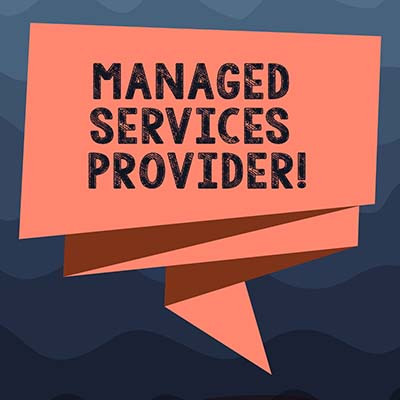The entire premise of managed IT services is that they can save your business money, but in what specific ways does working with us make your budget more predictable? It’s really quite simple, and it encompasses three primary pillars: an established level of service, proactive maintenance and management, and the reliability and access to expertise that might otherwise put a stopper on your business’ potential.
k_Street Consulting, LLC Blog
All organizations rely on their information systems to be consistently available when required, with some businesses being unable to function without them. When these systems undergo necessary maintenance, such as software patches, it can pose challenges for employees who rely on their continuous availability. In this discussion, we delve into the proactive approach to IT maintenance, exploring its strategic benefits in preventing downtime for businesses.
Obtaining professional insights is invaluable and it can be difficult to do as fees for consulting have shot through the roof. IT consulting plays a pivotal role in providing businesses with a profound understanding of their technological environment. Here are various ways in which IT consulting enhances a business' approach to technology, fostering informed and strategic decision-making.
Technology is more than just a tool for business; it is the business. That’s why it is essential to ensure that your business’ technology works for you and not against you. This is easier said than done. It takes technicians with refined skills from experience working in the field to understand how to keep all the technology your organization relies on working effectively. Let’s take a look at why managed IT services are a huge benefit for any business that relies heavily on technology.
Your technology is essential to your business remaining efficient and your employees remaining productive. Unfortunately, this technology will fail at some point. By adopting proactive strategies, businesses can ensure the longevity and smooth functioning of their IT infrastructure. In this blog post, we will explore how proactive management of IT can keep it running longer, resulting in increased efficiency and cost savings.
Businesses that don’t leverage managed services for their technology infrastructure are leaving a lot of money on the table, but it’s not always easy to see until you break down what the solutions really do for you. In isolation, they might not seem valuable, but when combined, they save your business significant amounts of capital.
We always try to communicate the numerous benefits of managed IT services, but when your business is happy to have their own internal IT department, those benefits tend to look less appealing. For organizations that rely on the expertise of their internal IT staff, they may not think they have a need for—or simply can’t afford—an outside IT presence. This misconception may actually be harming their businesses. Today, we will introduce co-managed IT services, and how they can be leveraged to maximum benefit.
Opening a new location can be difficult. When is the right time to expand? If you think you’ve reached that point, you will need to ascertain how to use technology throughout multiple locations. In this month’s newsletter, we’ll discuss some of the considerations you have to make in order to get the technology that will help you move into your new location and sustain the demands that it will put on that technology.
It isn’t easy to run a small business, and a lot of this difficulty comes from the fact that, as an owner of a small business, you have some limitations that dictate how your business can be run. For many businesses, one of these is a budgetary one. If you are going to stabilize your costs, you need to know that the investments you make are going to work. One way a managed services provider accomplishes this is through remote monitoring and maintenance.
Even the most technology-literate of your average employees is not going to have the knowledge needed to manage and maintain your entire business infrastructure, and you shouldn’t expect them to, either. It takes a special kind of attention and training to manage complicated enterprise-level technology, but how can you make sure your business has access to these important resources?
If you work with technology, then you are likely to have a good idea of what innovation is and isn’t. Innovation is born from creativity, and while it’s not often associated with business IT, there is something to be said for how technology professionals solve problems in a creative fashion, solving problems with solutions available either in-house or on the market. Today, we are focusing on how this creativity can be an asset and how you can foster creative thought in your office.
Companies hire many talented individuals for many different types of positions, but one way that some organizations choose to amplify their operations is through proper outsourcing. This practice can be invaluable for businesses that want to take things up a notch and adjust the way they operate for the better.
In today’s business world that is so reliant on technology, there are few issues more disruptive than a computer that is not working properly. When your computer stops working and you have no clue what to do next, who is first on your calling list for assistance? Do you have someone on-hand who can resolve your technology problems?
How does your business manage its IT resources? Do you have a chief information officer, or CIO, in-house who manages everything related to your technology? If not, who is the one responsible for managing and maintaining your systems? If you don’t know the answer to this question, we have a reality check for you: you need to.
If you don’t properly maintain your technology, then it’s simply not going to be one of your company’s strengths. It’s a simple statement, but it’s one that many modern businesses fail to act upon. A managed service provider can make it much easier to get the technology maintenance your business needs to succeed. Let’s take a closer look at the people who deliver these services to your organization.
Every business has vendors and most of them take up more time than they probably should. Some of the relationships are pragmatic and fulfilling, but many take up too much time and effort and tend to distract decision makers from focusing on what is truly important within the business. As far as technology goes, depending on your company, you may have a dozen or more vendors contacting you sometimes a couple of times a month looking for you to expand your investment with their companies. Let’s talk about how vendor management can help your business.
We often talk about how some businesses do not have the budget to hire technicians to perform regular maintenance on their IT infrastructures, but what about the one behind the scenes calling all the shots? If companies cannot hire technicians, then it stands to reason that they also cannot afford someone at the executive level who manages their workload. The concept of the virtual chief information officer, or virtual CIO, challenges this notion by providing access to technology leadership for small businesses.
How does your business manage its IT resources? Do you have a chief information officer, or CIO, in-house who manages everything related to your technology? If not, who is the one responsible for managing and maintaining your systems? If you don’t know the answer to this question, we have a reality check for you: you need to.
To be adept at a task is to say that the one doing the task is a professional, or someone with substantial knowledge that can be used to effectively complete the task. Cybersecurity is one such area where having a considerable amount of knowledge is of particular importance to help navigate the complex environment surrounding it. How can your organization achieve this level of mindfulness and expertise?
For most businesses, technology is a complete necessity these days. It’s been proven that, by integrating some technology strategically, businesses can solve major operational problems that many smaller businesses and startups can’t. Today, we will ask three questions about business tech that any technology-savvy individual should know, and explain why you should know them.
Managed Services provide endless benefits to any business, no matter the size. Having a “Fix it when it breaks” attitude is an unrealistic way to run your business in an era that is so heavily technology-dependent. Today we dive into the many reasons a Managed Service Provider (MSP) can maximize your investment.
Working in IT for any length of time will make you understand that it isn’t just novice workers that have trouble with their computers. In truth, about seven out of ten people can’t diagnose and fix simple IT problems. With that truth, it’s evident that any business that relies on IT, or at least on the productivity of people who use workstations, needs to have some type of strategy to keep those endpoints up, running, and managed proficiently.
Okay, time for some real talk: There is no denying that 2020 has held a few unique challenges for everyone who runs a business. Economic challenges, political tensions, and an honest-to-goodness pandemic have all thrown us all for a loop. As a result, it is important that businesses all adjust their technology priorities to survive. Let’s discuss these priorities, and how they will need to shift.
Would you know if the technology your business runs on hadn’t been updated for a while? How can you determine when your software licenses run out? Has your printer been serviced in the past six months? If you have no idea about the answers to these questions, you may be staring disaster in the face. Let’s discuss how you can answer “I don’t know” and not be in jeopardy of a catastrophic technology problem.
With less than half of 2020 behind us, many of us would already like a re-do of this year. With a global emergency impacting the personal and professional lives of so many, businesses are struggling right now. For these organizations to survive, they will need to get the most out of every business investment. When it comes to their essential technology, we recommend investing in managed IT services.
Old-school business information technology support isn’t necessarily wrong, but it most definitely isn’t cheap nor efficient. IT support strategies are developing in ways that some time ago, would have thought to be unheard of. Your business no longer needs a full on-site staff designated to maintaining network security or updating software. In part two of our five-part series, we discuss how your business can have the support it needs through managed services.
Working in an office can often be a grind. People that have never experienced it may not realize just how much coordination is needed to perform successful service delivery and support. One way the modern office functions is with the help of integrated technology. This month we will take a look at the modern office, the technology used by the office staff, and how the managed IT service provider can help build operational efficiency.
Downtime is a killer for any business. When a business is forced into confronting its technology support deficits, it usually means that they’ve been dealing with too much broken technology and downtime, and the costs associated with it. One way your business can avoid losing huge chunks of time to broken technology is to add a professional help desk to support your IT administrator.
We talk a lot about managed services for small and medium-sized businesses, but unless you’re familiar with the business model, you won’t be able to learn much about who we are and what we provide to organizations like yours. Today we are hoping to clear up some definitions of managed service providers, or MSPs, as well as what kind of services we can provide for businesses with limited budgets.
Do you know what can completely kill a business’ momentum? Downtime. Businesses of all types look for a myriad of ways to save themselves the headaches that come from significant downtime. One way that is sure to reduce an organization’s downtime is by having conscientious IT management and support at the ready. One problem with this is that it's typically costly to hire a team of IT professionals with the experience and knowledge to keep your technology up and running.
Businesses these days rely on technology in order to function properly, but what happens when this technology doesn’t operate as intended? If your organization doesn’t have a dedicated help desk on-premise, you’re probably suffering from unnecessary downtime and technology troubles with no recourse.
There are various types of user accounts that your employees and administrators can use to access their workstations, but one of the biggest points of contention to consider when planning out data access is the use of administrator accounts. Specifically, you want to avoid handing out administrator account access to users like it’s Halloween candy.
It’s only natural that new and improved technologies will be challenging for employees to embrace and become accustomed to using. These challenges tend to shape how businesses will make their decisions as time passes. A few industry research firms have released their projections as to what challenges businesses will face in the coming months of 2017.
Most people think of audits and immediately cringe, but the fact of the matter is that businesses wanting to maximize output can really benefit from an audit. Audits can be great ways to ensure that a business’ priorities are being given their due attention, and that best practices are being utilized. An audit of your IT infrastructure and network can go a long way toward helping you determine if there are changes you need to make in order to maximize the profitability of your organization.
Technology is a major factor that can determine your business’s fate, yet some organizations don’t necessarily recognize IT problems before they make themselves apparent. Unfortunately, by the time you notice any issues with your IT, they are usually turning into problems that cause your business considerable troubles. To keep issues from evolving into major problems, it’s up to you to ensure that your technology is maintained in a proactive fashion.
Have you had to make substantial technology investments in the past year? How much money do you think you will spend this year? If you have a solid technology budget in place, you'll know how much you expect to spend, but what happens if critical systems fail? Are you prepared to cover the cost of new technology, the management of that technology, and the staff that you'll need to do so? If you are even a little unsure about it, managed IT services could have plenty of value for your business.
Your business deals with all types of troubles, but one trouble that can be extraordinarily costly is when your organization's technology doesn’t work properly. That’s why many businesses hire an IT staff who work to mitigate technology-related problems. One issue you should be cognizant of is cost. Typically, IT professionals have training, certifications, and experience and demand an above average salary. If you have a small or medium-sized business that is working with tight margins as it is, it can be extremely difficult to take on new personnel costs; especially ones that don’t directly result in bringing revenue through the door.
Technology is necessary for so many businesses, but some don’t know how best to approach managing it. This is particularly difficult for businesses that have limited budgets and workforces, which leads organizations to simply go without the support in favor of saving some cash. Of course, when something goes wrong, it’s more noticeable and could cause major troubles in the future. This break-fix IT is far from the best way to approach IT maintenance, but how can you make sure your budget doesn’t suffer from it?











































